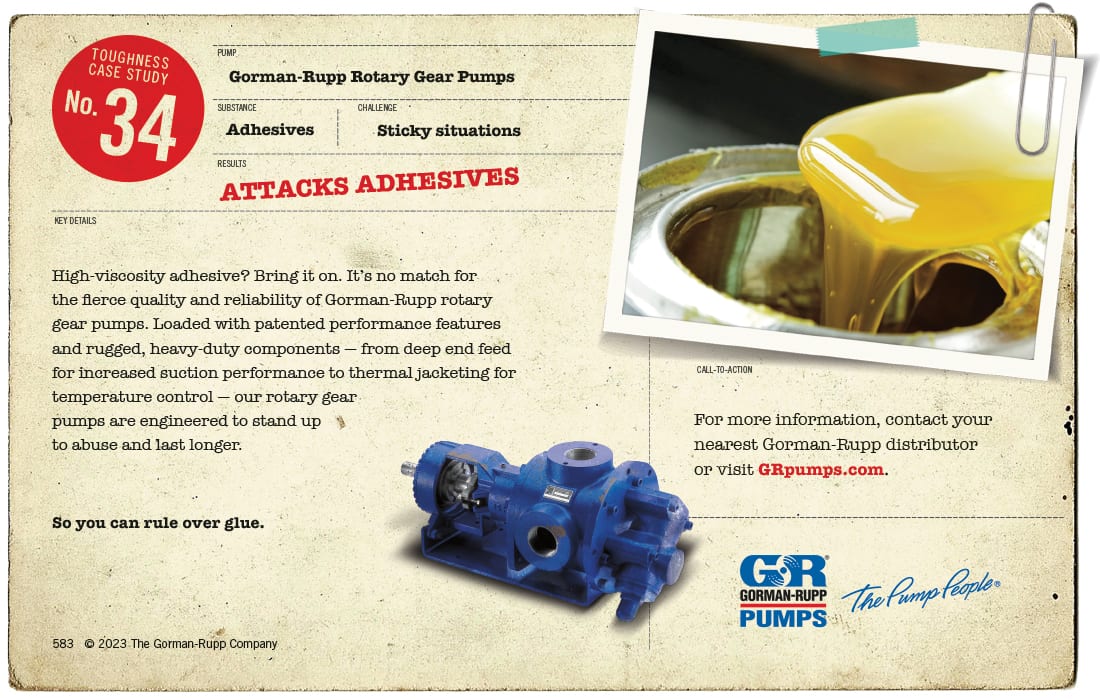MARKET TRENDS
Hot Melt Adhesives Market Grows amid Supply Chain and Raw Material Challenges
By John Nelson, Editor at Smithers
World demand for hot melt adhesives expected to grow in multiple applications, latest Smithers insight reveals.
Hot Melt Adhesives Market Grows amid Supply Chain and Raw Material Challenges
World hot melt demand set to grow in multiple applications, latest Smithers insight reveals.
Global demand for hot melt adhesives (HMAs) reflects a market still reacting to profound changes and a varied recovery in key end-use segments. These are the conclusions reached by Smithers, a consultancy for the paper, plastics and packaging industry, in a new report released by the company.
Data covering all major HMA chemistries, applications, and regional geographic and national markets across the next five years show global HMA consumption will increase at a compound annual growth rate (CAGR) equivalent to +3.6%, by weight across a five-year study period. This is expected to create a market value of $9.45 billion in 2027 (at constant prices), with consumption increasing to 2.77 million tonnes. The report expects global demand for HMAs to reach a total of 2.40 million tonnes in 2023, worth $8.40 billion.
Pricing and Supply Chains
Prices for HMAs were affected by the COVID-19 pandemic, continuing into 2022, and now 2023. Pricing increased markedly in 2021, due to raw material shortages and supply issues caused by the pandemic. Further increases were witnessed in 2022 due to tightening markets, a rise in energy prices, and additional supply chain disruptions linked to the war in Ukraine and economic sanctions against Russia.
For the future, Smithers anticipates only minor downward price adjustments; with greater discrepancy among, and at times within, world regions. In the short term, there are distinct challenges in securing adequate raw materials and navigating dramatic increases in raw material prices, and other input costs – mainly energy.
In response, HMA producers’ focus is shifting from the efficiency of their supply chains, to their resilience. Some have already looked to reformulate their products to maintain supply, and prioritise localisation over diversification, leading to a deglobalization of supply networks.
Chemistries and Formulations
Hot melts are gaining ground within the broader adhesives industry, especially as an option to replace solvent-based formulations. HMAs do not release VOCs during application, offer superior shelf life, and pose fewer challenges for disposal at end-of-life. Importantly, they are also benefitting from the fact that sustainability is becoming an increasingly important consideration in procurement. In packaging — the largest user of HMAs — for example, they can bolster recycled pulp recovery from old corrugated cases and other formats, helping to fulfil corporate pledges to make packs recyclable.
According to Smithers, ethylene-vinyl acetate (EVA) copolymers remain the most widely used base for HMAs, accounting for 34.7% of the 2023 market by weight. The position is expected to be maintained across the next five years, with the fastest growth expected to come from polyolefin and polyurethane chemistries.
Polyolefin HMAs are set to overtake styrene block copolymer (SBC) as the second most lucrative segment of the market in 2023 with further future gains forecast, and SBCs losing some market share. The wider sustainability trend is influencing this shift. Most polyolefin HMAs can be produced with up to 100% bio-based raw materials, and major suppliers — including Neste, Braschem, and Clariant — already offer bio ethylene or propylene feedstocks.
Volume consumption will be impacted by the trend to apply smaller volumes of HMAs more effectively to a surface. This requires investment in new precision application equipment. Some suppliers will be positioned to benefit from this, as well as by preparing formulations with lower melting temperatures, that a user can translate into both energy and cost savings.
HMA market, by polymer type, 2019 and 2027 ($ million). Image courtesy of Smithers.

End-use Markets
HMA sales in the past three years have been heavily dependent on how broader economic issues have caused shifts in end-use industries. The top two end-use segments for HMAs by volume are packaging (31.8% by volume, 2022) and disposable hygiene products, or nonwovens (17.0%). Construction (including wood and furniture manufacture) is a close third by volume (15.6%), and outsells hygiene products. There are also several emergent opportunities in transportation.
The packaging industry was resilient during COVID-19, although consumption channels changed. There was a loss in demand for HMAs in transit corrugated formats; but this was replaced and exceeded by new sales of smaller delivery box and mailer formats, as e-commerce sales surged. Hygiene products saw an initial peak from pantry loading, or panic buying, but otherwise demand was largely consistent across the COVID-19 years. For the future, despite inflation, demand in developed markets is forecast to remain steady across the next five years. As it expands, buyers in hygiene applications will continue to prioritise aesthetically pleasing, low-odour, light-coloured HMAs.
Construction and transportation sales suffered more noticeably, with fewer buildings being constructed and new car purchases falling sharply. A moderate recovery of HMA demand in construction is anticipated as markets recover from COVID-19 disruption; although related uses in furniture and wood products will be more sluggish.
Transportation and especially automobile manufacture continues to face problems; mainly a global shortage of semiconductors, leading car builders to slash their near-term production forecasts. In the longer term, HMAs do have opportunities, in particular, as a lighter weight solution for bonding parts — helping vehicles achieve the latest round of more stringent fuel efficiency certifications.
Electrification of transport will be another overarching trend through to 2027. This is generating specific opportunities to supply premium HMA lines for battery assembly and reducing thermal barriers on drive train components.
Learn more about Smithers’ report, The Future of Hot Melt Adhesives to 2027, at the company’s website.
Opening image courtesy of Matt Molloy / iStock / Getty Images Plus.

